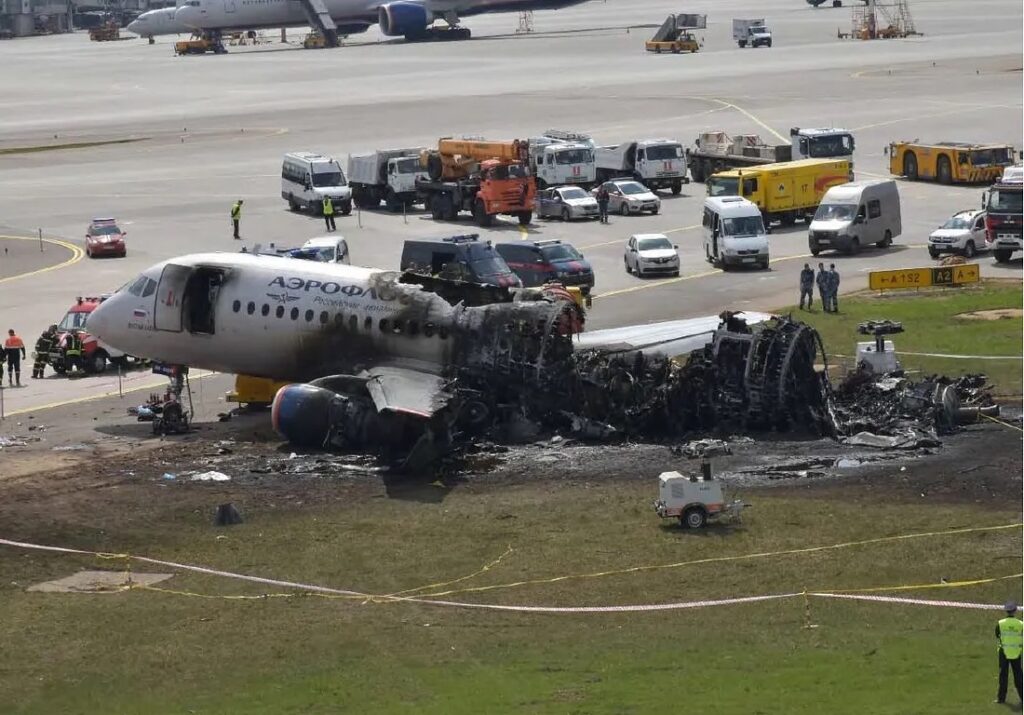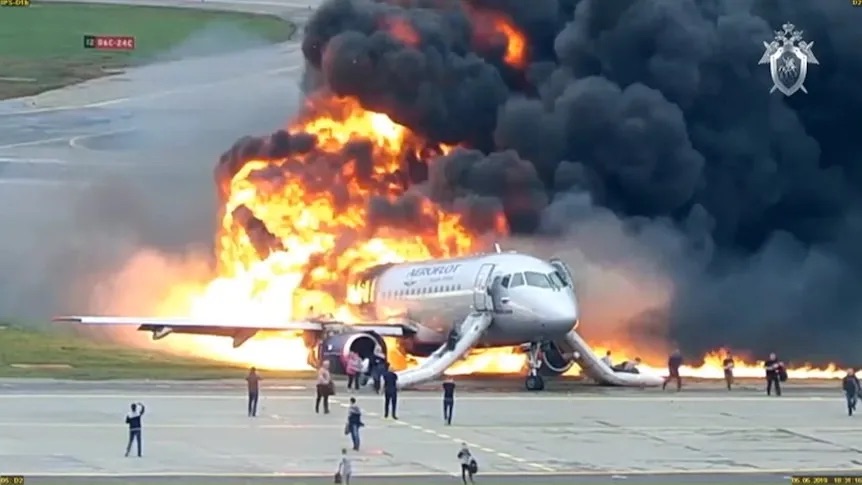
On the 5th of May 2019, travelers at Moscow’s biggest international airport were greeted by the astonishing sight of a passenger plane skidding down the runway in flames, its tail section engulfed by a conflagration of biblical proportions. As the crippled jet slid to a stop, the doors opened, the slides deployed, and passengers ran for their lives — but for many, the evacuation was over before it even began. In the back of the plane, the fire ripped into the cabin so quickly that some passengers perished without so much as a chance to stand up from their seats, while others collapsed in the aisle, enveloped in a cloud of toxic smoke from which they would never emerge. By the time the fire was out, half the plane stood intact, while half lay in ruins; and in a chilling mirror image of the vessel that carried them, 37 people walked away, while 41 others never came home.
The crash of a Russian-built Sukhoi Superjet 100, at a Russian airport, while flying for Russia’s flag carrier, set off a circular firing squad of accusations, as observers and stakeholders alike sought to determine whether fault lay with the airline, the airplane, the flight crew, or even the passengers, some of whom stopped to retrieve their carry-on bags while their countrymen burned. But the crash of Aeroflot flight 1492 isn’t a simple story. It ended in a wall of fire, but it began with a thunderstorm, a lightning strike, and a malfunction of the fly-by-wire control system, followed by a desperate return to the airport, an unstable descent and approach, and a botched landing attempt that slammed the plane into the runway over and over until it broke. The sequence of events was so long, raising so many complex questions, that it took investigators from the independent Interstate Aviation Committee nearly six years to reach firm conclusions and publish their report, which stretches to almost 600 pages and includes two dissenting opinions. The vast quantity of primary evidence, experimental data, and expert analysis contained in this new report finally permits a reasonably objective recounting of what actually happened on that blustery day in Moscow, in the process revealing a story that is colossal in breadth, mind-bendingly technical, and yet also at times frustratingly banal.
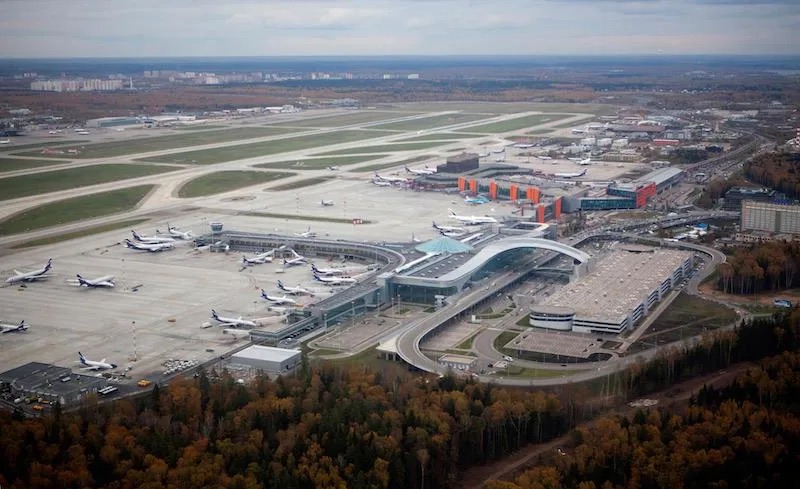
Part 1: Red Alarm
To be an airport firefighter requires acceptance of the principle that anticipation is more enjoyable than gratification. Yes, once in a while a fire erupts in a trash can or a piece of luggage, or someone spills some hydraulic fluid, but a great deal of time is spent either training for or standing ready for a career-defining catastrophe that most will never see. There is a certain frustration associated with the absence of a reason to put those skills to use, albeit one that is usually dispelled as soon as such a reason actually arises.
At Sheremetyevo International Airport, the world’s gateway to Moscow, the airport firefighting service is much like any other. Although Russia has a spotty aviation safety record, Sheremetyevo had long been spared, and by May of 2019 the greatest excitement within living memory for the airport firefighting service was a 2014 blaze aboard a mothballed Il-96. In an official statement, the airport declared that the soon-to-be-scrapped airliner was destroyed as a result of “spontaneous combustion.”
The 5th of May 2019 was a turbulent spring day, with thunderstorms bubbling up across the Moscow region. At Sheremetyevo Airport, the temperature by late afternoon had reached a pleasant 15˚C, with variable winds gusting up to 54 km/h amid intermittent light rain showers. Although Russia’s meteorological service had issued SIGMET thunderstorm warnings for the area, traffic at Sheremetyevo was no less heavy than usual. Throughout the afternoon, a flight took off every two minutes, climbing into the onrushing wind before turning sharply away toward clearer skies.
Unknown to the firefighters, one of those planes was coming back.
At 18:30 local time, a tremendous bang rang out over the airport, turning heads in the terminals and on the ramp toward Sheremetyevo’s runway 24 Left. And there they saw a plane, a little silver regional jet — or rather, just half of one, because the other half was lost somewhere in a firestorm of such tremendous size that witnesses could not believe it had only just now ignited, and yet it had. Flames and smoke billowing behind its wings and tail, the aircraft rolled down the runway at low speed with its nose gear extended but its belly dragging across the ground like a wounded dog. Within seconds, it began to slew to the left, its nose pivoting to face the terminal, whereupon it briefly appeared to travel sideways before it finally ground to a halt somewhere in the vicinity of taxiway Alpha 2.

Atop a lookout tower at Sheremetyevo’s Fire Station #1, the firefighter on observation duty did not know that an aircraft had declared PAN-PAN, one step short of MAYDAY, that its crew had reported flight control problems, or that it was coming in for an emergency landing. Normally he would have this information, but today, he didn’t. He too knew only that an aircraft had burst into flames before his very eyes. Before it had even stopped moving, he pressed the alarm button and transmitted on the airport’s fire rescue channel, “Emergency! Aircraft on runway!” A brief pause followed as the burning aircraft continued down the runway in his direction, and then he repeated, “Emergency, did you copy!? Fourth runway, an aircraft is burning on the runway!”*
*Although the MAK published an English translation of its report, all quotations in this article are my own translations from the Russian language report.
At the terminal, cameras swiveled to focus on the burning airplane, its nose pointed right of frame, greedy tongues of fire curling around its fuselage and tail. Within seconds, the two forward exit doors opened, the slides deployed, and people began to pour down them, but behind the wings, flames were already bursting forth from the cabin windows, rippling and churning in the jet blast of the still-running engines. Burning fuel carpeted the ground in fire, silhouetting the passengers as they ran.
On the rescue frequency, the Rescue Response Supervisor announced, “Declaring alarm! To all vehicles, all firefighting vehicles are called to 24 Left immediately!” Another voice jumped in: “Attention! The alarm is declared to the emergency and rescue teams, code red! Superjet, Aeroflot airline, upon landing due to technical reasons is on taxiway Alpha, catching fire.” In response to the red alarm, the on-duty rescue teams jumped into their vehicles and peeled out of the stations with sirens blaring. But an airport is a vast place, and their arrival would not be instant.
At the aircraft, two flight attendants dressed in Aeroflot’s bright red uniform fled the cabin, one after the other. Somewhere amid the heaving smoke, the empennage burned through and collapsed to the ground.
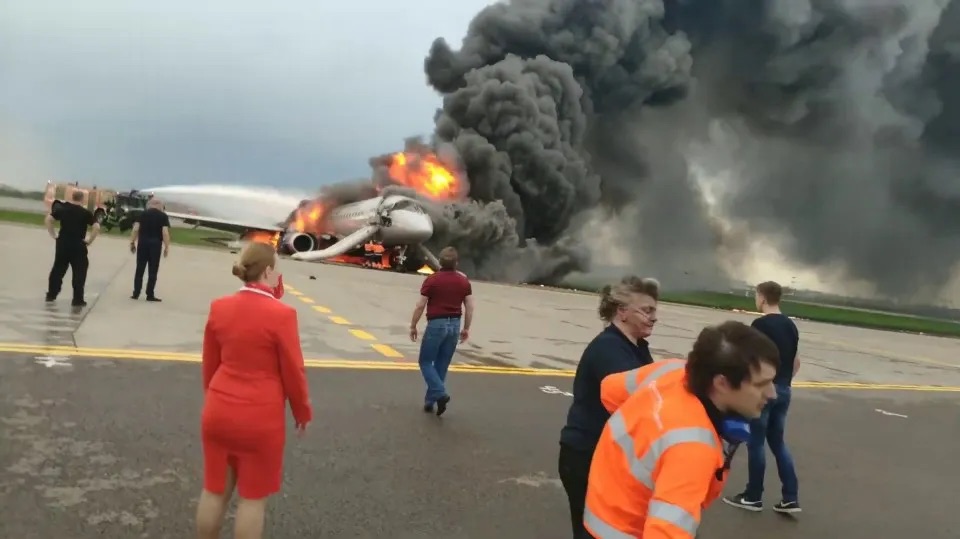
For a moment, no more passengers came. And then a woman threw herself down the slide and collapsed unmoving to the ground. A man followed headfirst out the door, stood up, and walked away. Behind him, another person toppled down the slide, stopped at the bottom, and rose only with difficulty. A ground handling worker, by coincidence the first airport employee to reach the scene, attempted to render assistance.
As the first fire truck approached the aircraft, it was obvious that a major disaster was unfolding. “Sirena — Strela-8, proceeding to the site,” its driver reported. “Heavy smoke in sight, black smoke, and flames. How do you copy, over? Call for additional garrison forces and an ambulance!”
The crew opened fire with the water cannon as the vehicle was still moving, throwing water onto the sizzling tail section. A dazed passenger watched, alone, from the taxiway.
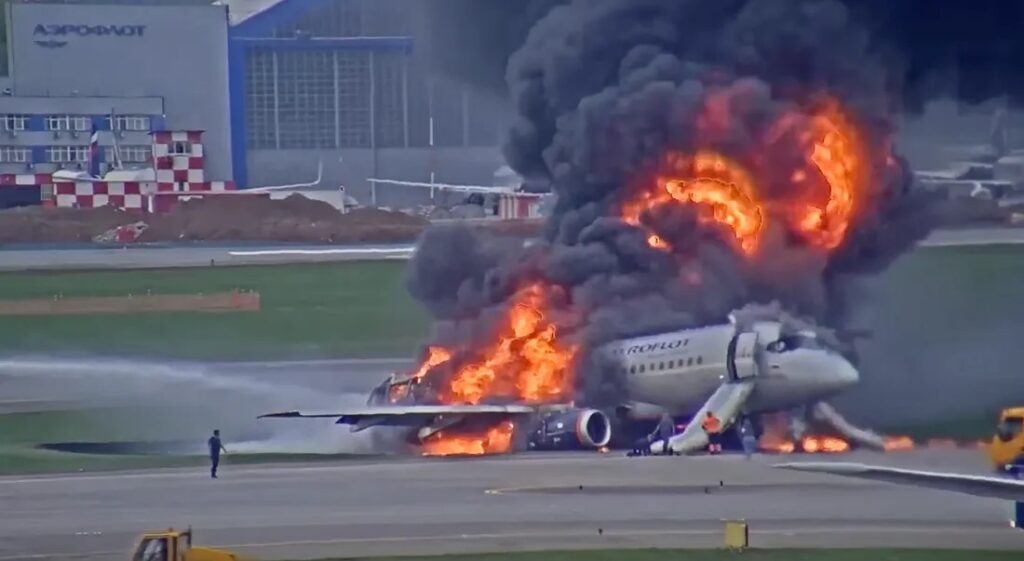
Forced out by the smoke and flames, the first officer deployed the emergency escape rope and climbed down from the cockpit window. Firefighters and ramp personnel helped him to the ground, and then he ran around to the slide and stared up at the smoky darkness within the cabin, seemingly unsure what to do.
As more and more fire trucks arrived on the scene, the flames started to wither under their assault. The first officer then attempted to climb up the slide, fell, and was boosted by a ground handler. The captain appeared at the door and dragged him back aboard, no doubt to the consternation of the firefighters who were at that moment desperately attempting to save him. Seconds later, he threw his flight bag and another object down the slide, then jumped down after them, surrounded by a half a dozen white arcs of firefighting foam.

For some time, firefighters and ground personnel milled about, watching the flames die down, waiting for the captain to abandon ship. After a minute, someone brought a ladder, and a man with no protective gear climbed up it, entered the cabin, reconsidered his decision, and threw himself back out the door to the ground. A better equipped firefighter followed, shouted for the captain to leave, and then backed away to give him room. Finally, the captain, too, jumped to safety. He would be the last to leave the plane alive.
◊◊◊
As medical and airport personnel gathered the passengers at the terminal, prepared the wounded for transport to hospital, and set up an information center, Aeroflot employees retrieved the manifest and conducted a headcount. A preliminary statement put out by the airline vaguely stated that “Passengers left the aircraft via the emergency exits” but did not confirm the seriousness of the accident. Russia’s Emergency Ministry even released a statement claiming that all passengers had escaped. But at that point the rescue teams already knew that a flight attendant was missing, because the captain had told them as much before he left the plane. As for the passengers, the captain had no information. And at the terminal, company personnel discovered, to their horror, that only 33 of the 73 passengers could be accounted for.
Within minutes, the fire was put out, and rescue teams entered the aircraft. There was little hope of finding anyone alive. But no one could possibly have been prepared to find so many people dead.
Initially, the regional transportation office reported one official fatality, the aft flight attendant, who was found lying on the ground outside the 2L door. But over the next few hours, the official toll rose to 10, then 13. At the airport, rumors swirled. Officials told the media that they could confirm the whereabouts of only 37 out of the 78 passengers and crew. Early the following day, Aeroflot published a list of 37 names belonging to known survivors, with an attached note. “The list is incomplete,” it read. “As of now information regarding other passengers on the flight is being confirmed.” But no more names would ever be added.
